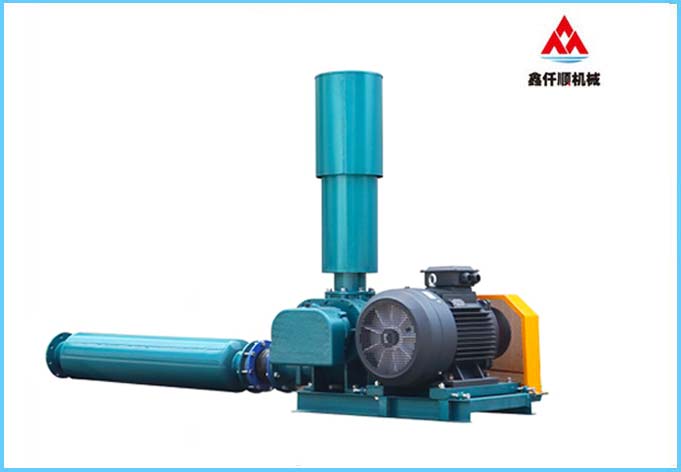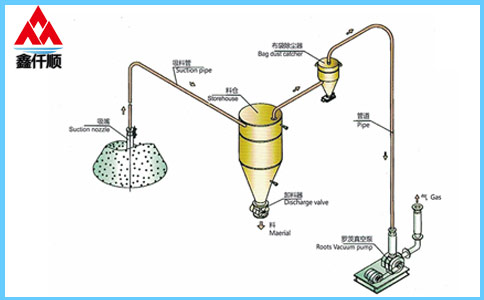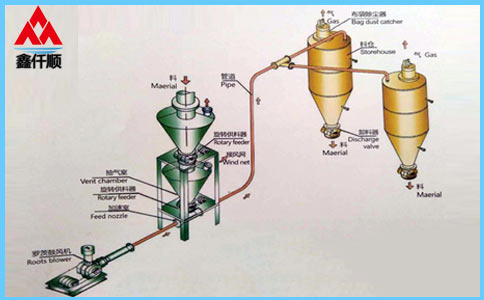Roots blower rotor shall be free of sand holes, air holes and other defects. During the assembly of Roots blower rotor, the parallelism deviation of the journal at both ends shall not be greater than 0.02mm, and the parallelism deviation of the face at both ends and the wallboard shall not be greater than 0.05mm. When the inlet and outlet directions of the fan and the position of the main shaft remain unchanged, the rotor pressure angle clearance shall be adjusted at two positions where the rotor horizontal line forms an angle of 45 °. Different models of fan rotors have different clearances. The rotor of Roots blower shall be checked for dynamic and static balance.

The perpendicularity tolerance between roots blower shaft and rotor shall not be greater than 0.05mm. After unpacking, check whether all parts of the fan are deformed or damaged during transportation. If so, they can be installed and used only after inspection and calibration. The power selected for Roots blower refers to the power required for air volume at the performance point at the same speed in the fan performance table, not the power required for fan operation when the inlet and outlet are fully open. Therefore, in order to prevent the motor from burning out due to overload during use, the fan must be started without load (the inlet or outlet valve of the fan is closed). During operation, the working current shall be measured at any time and shall not exceed the rated current of the motor. The connecting flange of the fan shall be connected with a flexible pipe to facilitate the vibration isolation between the fan and the pipeline, and the sealing glue shall be added to avoid air leakage. The rubber pad (about 3cm) shall be added at the connection with the foundation. Open the junction box, switch on the power supply for test run (no-load), the rotation direction of the impeller shall be the same as the arrow on the nameplate, and observe whether it touches the shell. If so, it shall be adjusted on site. After the fan is installed in place. All fasteners must be retightened. After the fan is installed in place. All fasteners must be retightened. Shock absorber shall be installed when installing the wind cabinet, motor protection device shall be installed when distributing power, and motor above 7.5KW shall be equipped with step-down starting. Sufficient space shall be reserved around the cabinet machine, especially at one side of the access door, for inspection and maintenance. No collision is allowed at the rotating part. All bolts fixing parts shall be tightened. The fan has been running for 3-6 months continuously, and the rolling bearing shall be checked once to check the looseness of the clearance between the rolling element and the inner ring, the outer ring, and the tightness of the fit between the inner ring and the shaft. Maintenance of fan: When a fan is started, stopped or operated continuously under normal conditions, if abnormal conditions are found, mainly including temperature, vibration, noise, etc., it shall be overhauled immediately. Use the adjusting device to always keep the V-belt in a uniform tension state, which cannot be too loose or too tight. The length of several V-belts should be the same as far as possible. For the unused standby machine or the fan that has been out of service for a long time, the rotor shall be rotated by 120 ° - 180 ° regularly to avoid bending of the main shaft. To ensure personal safety, the fan must be maintained during shutdown. Advantages of high-voltage Roots blower after energy-saving transformation by using frequency converter:
1. Improve power factor and reduce reactive power loss;
2. It has the automatic energy-saving control function, and can automatically adjust the voltage according to the load condition, so that the motor can operate at the highest efficiency;
3. The frequency converter adopts low-frequency output rated torque, which can effectively control roots blower;
4. Save energy and reduce operating costs;
5. Extend the service life of Roots blower;
6. No large current impact during soft start and startup.
Selection parameters of high-pressure roots blower:
1. Air volume
The actual amount of gas flowing into Roots blower in unit time is m3/min.
2. Wind pressure
It is the total pressure of the fan, commonly used in kpa, mmaq, etc.
3. Output speed
The speed of the air volume delivered by the high-pressure roots blower, in meters per second (m/s).
4. Gas density at inlet
Density of air/gas at the inlet of Roots blower, mass per unit volume, kg/m3.
5. Height of fan
Altitude at which roots blower is installed, in meters.
6. Natural properties of gas
Whether the transported gas is corrosive, irritant, flammable, etc.
7. Type and layout of high-pressure roots blower
When installing the high pressure roots blower, the position of air input and output, the size of inlet and outlet pipes and the position of bearings shall be considered.
Maintenance of high-pressure roots blower:
1. Check the working condition of each instrument panel
The instrument panel of Roots blower includes barometer, voltmeter and flowmeter, which are the key instrument panel. When the Roots blower is operating, if the barometer is too large, it will be a problem of pipeline blockage and internal blockage; If the voltmeter and flowmeter are too large, there will be blockage. Check the inlet and outlet of Roots blower also have pipeline conditions; If the voltmeter and flowmeter are too small, the working voltage will be unstable.
2. Identify common faults according to sound
When Roots blower is running, it will cause necessary noise. The noise is attributed to all normal mechanical equipment sounds. If there is any abnormal sound, we must turn on the blower to check whether there are hard particles inside the centrifugal impeller and housing; If the sound source comes from the external vibration of the engine body, then our maintenance position should be placed on the fixed anchor bolt.
3. The high-pressure roots blower is stuck and cannot work
In such a situation, the power supply should be turned off immediately for parking. The key positions for subsequent maintenance are gearbox, belt pulley, centrifugal impeller rolling bearing, coupling, etc. The external conditions should be checked first, and then the internal conditions should be checked for maintenance.
The key to the maintenance of high-pressure roots blower is to distinguish the position of common faults according to the external main performance. Because the structure of roots blower is different, such as direct drive system, synchronous belt drive, reverse flow cooling, etc., there will be different unique faults in different construction methods. The above mentioned is the analysis of common faults of common roots blower.
Due to its simple structure, the high-pressure Roots blower is relatively simple to repair. If it is a simple common fault and self repair, if there is a relatively serious common fault, technical professional maintenance must be carried out. After the maintenance of Roots blower, various inspections must also be carried out to ensure that all the machinery and equipment operate normally.
I believe that after reading the above contents, you should also have a certain understanding of the standard requirements for the maintenance quality of Roots blower. I hope it will be helpful to you.
Text label: Roots blower









